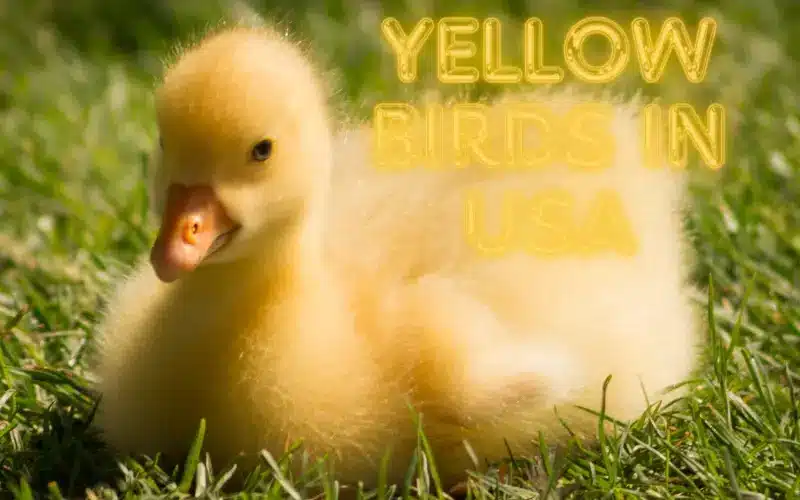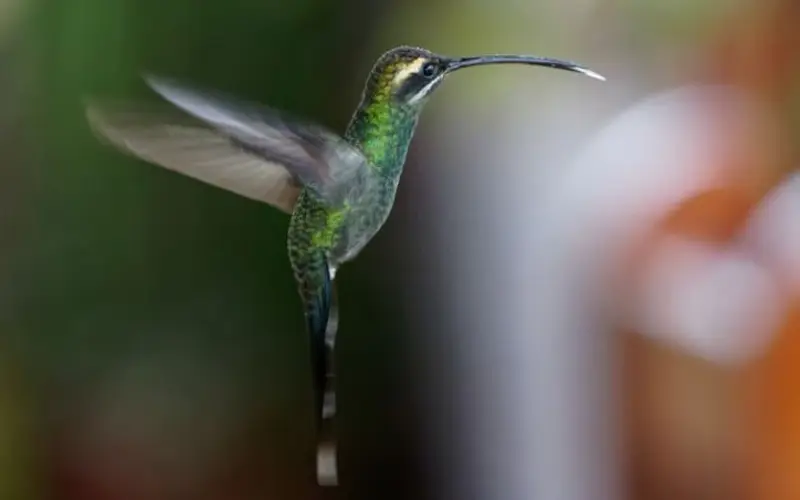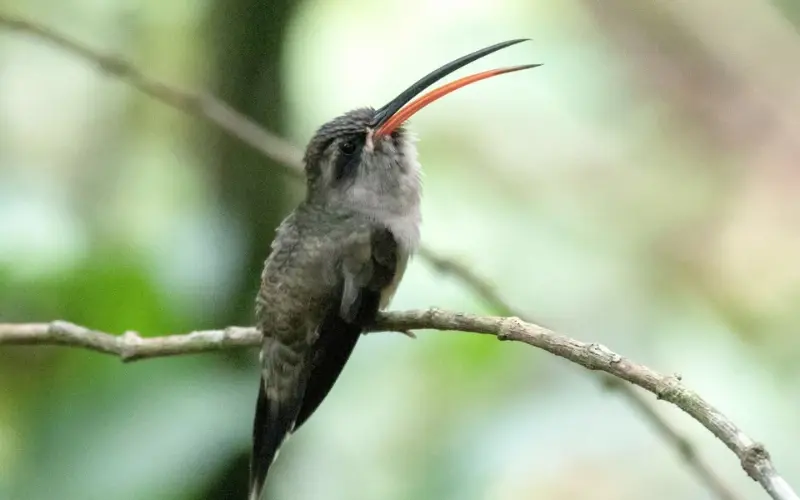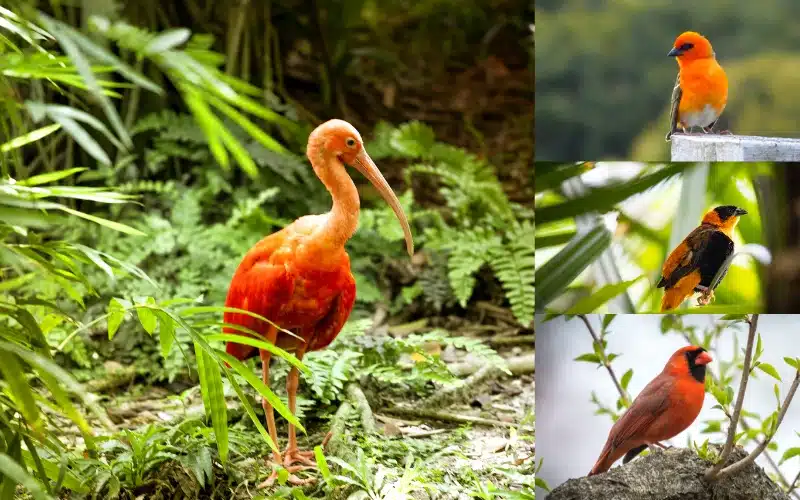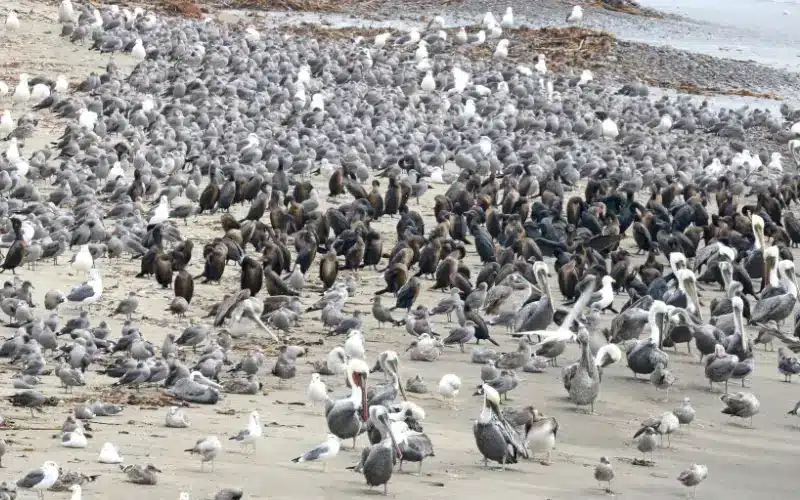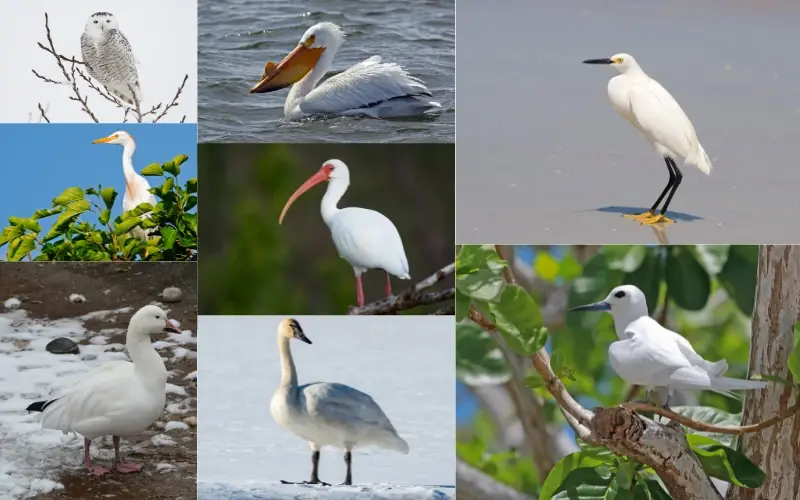Black Birds in USA, including the common blackbird, are a diverse group of avian species found throughout the country. These birds thrive in various habitats, from lush forests and wetlands to bustling urban areas and expansive open fields. Their adaptability and prevalence make them a familiar and cherished sight across the United States. With their ebony plumage and distinct calls, these black birds contribute to the rich avian diversity in the country.
Some popular blackbirds in America include the American crow, the common grackle, the red-winged blackbird, and the European starling.
These Birds in USA are known for their distinctive black plumage, which can be shaded and mottled depending on the species.
While some see blackbirds as pests or nuisances, others admire their intelligence, adaptability, and vocalizations.
This introduction will explore the different species of blackbirds found in America, their behaviors, and their relationships with humans.
Here is the 15+ Beautiful Black Birds in USA
1. American Crow
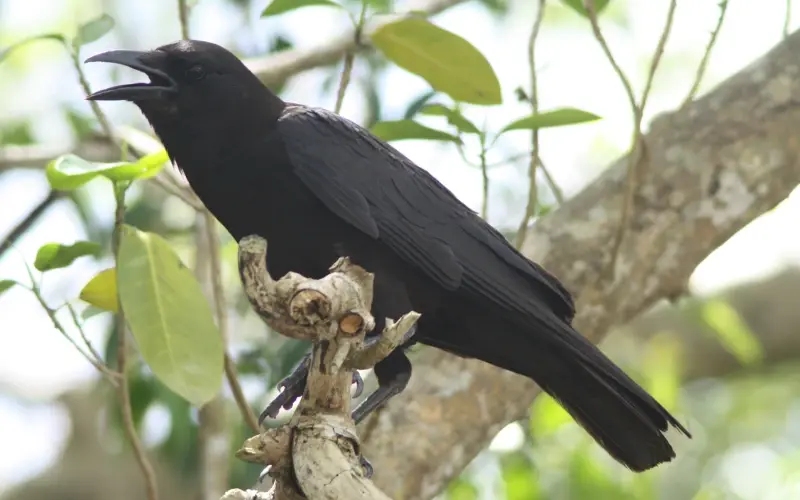
The American crow (Corvus brachyrhynchos) is a large passerine birds species in the Corvidae family. It is a common bird in the USA and found throughout North America.
The American crow is a large, distinctive bird with black feathers all around. Its legs, feet, and bill are also black. They are 40–53 cm (16–21 in) in length, of which the tail makes up about 40%. The wingspan is 24.5 to 33 cm (9.6 to 13.0 in), with a wingspan of 85 to 100 cm (33 to 39 in). The bill can range from 3 to 5.5 cm (1.2 to 2.2 in) in length, which varies considerably depending on location. The tarsus is 5.5 to 6.5 cm (2.2 to 2.6 in) and the tail is 13.5 to 19 cm (5.3 to 7.5 in). Body weight can vary from 316 to 620 g (11.1 to 21.9 oz). Males are larger than females.
Range: Pacific Ocean, Canada, Atlantic Ocean, France, St. Pierre Miquelon Islands, southern United States, northern Mexico
Diet: It is all kinds of invertebrate Animals, carrion, human food scraps, fruits, eggs and nestlings, young rabbits, fish, frogs, and other small animals.
2. Black phoebe
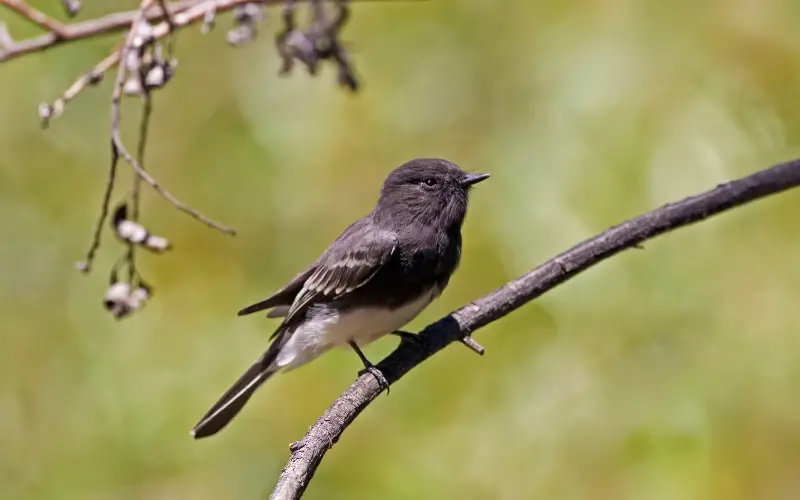
The black phoebe is a dapper flycatcher of the western United States with a black body and crisp white belly. They sit in the open in low places to check for insects. Blackbirds use mud to build cup-shaped nests against walls, overhangs, bridges, and bridges. Find them near any source of water, from small streams to suburban areas, to Pacific salt rocks and rocks.
Read: 5+Song Birds in USA
3. Red-winged Blackbird
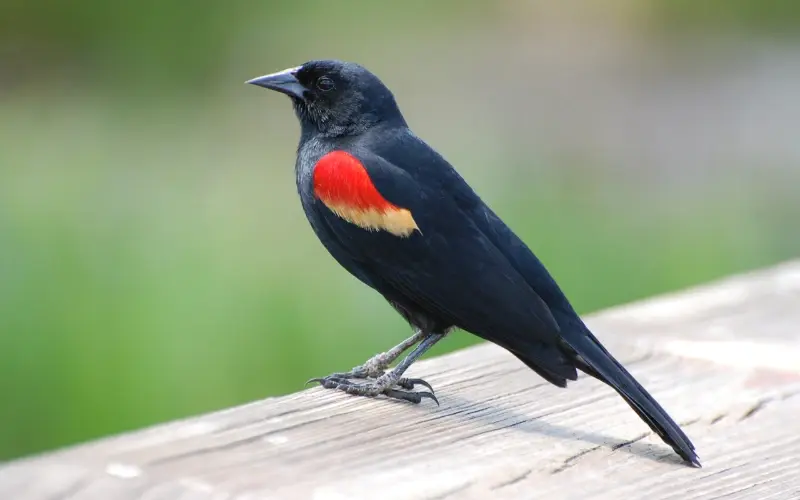
The red-winged blackbird (Agelaius phoeniceus) is a passerine bird of the Icteridae family found throughout much of North America and Central America.
The common name red-winged blackbird is derived primarily from the characteristic red shoulder patches, or epaulets, of black adult males, which are visible when the bird is flying or displaying. At rest, the male also displays a pale yellow bar. Males under one year of age have spots, usually subordinate, smaller, and more orange than adults.
The female is dark brown and lighter below. The female is smaller than the male, 17–18 cm (6.7–7.1 in) long and weighs 41.5 g (1.46 oz), while the male is 22–24 cm (8.7–9.4 in) long and weighs 64 g (2.3 in). oz compared to).
The smallest females can weigh up to 29 g (1.0 oz) while the largest males can weigh up to 82 g (2.9 oz) Each wing can be 8.1–14.4 cm (3.2–5.7 in), the tail measures 6.1–10.9 cm (2.4–4.3 in), the culm measures 1.3–3.2 cm (0.51–1.26 in) and the tarsus measures 2.1 cm (2.1 in). 0.83 inches).
The upper parts of the female are brown, while the underparts are dark white and covered with dark veins; Also offers a white-level list.
Red-winged blackbirds that breed in the northern part of their range, the border states of Canada and the United States, migrate south for the winter.
4. Brewer’s Blackbird
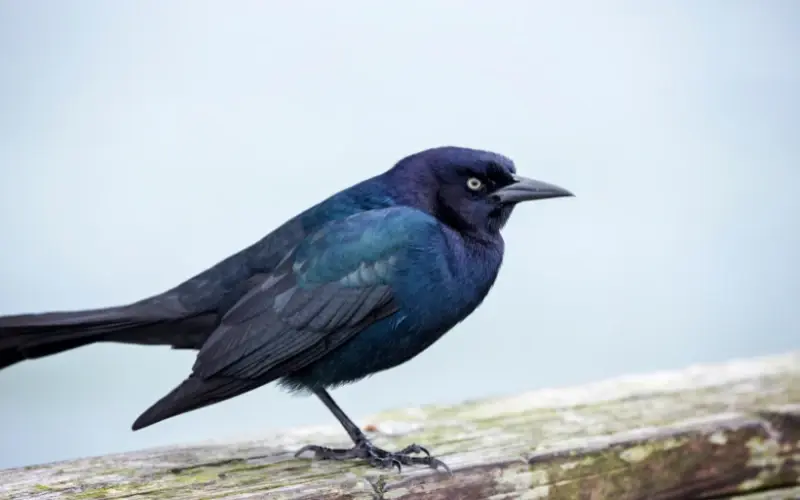
Brewer’s blackbird (Euphagus cyanocephalus) is a medium-sized New World blackbird. It is named after ornithologist Thomas May Brewer.
Adult males have black plumage along the head and neck and bright blue-green highlights on the rest of the body. The feet and legs are black and the eyes are bright yellow. The female is gray with a slight tip in the male. The eye of the female is dark brown while the eye of the male is bright yellow. Overall, they resemble the rusty blackbird, an eastern member of the same genus. Brewer’s blackbird has a shorter bill and the male has a purple head. This bird is often mistaken for a common grackle but has a shorter tail. The call is a quick check that is also distinguished. This bird is in a different family than the Eurasian blackbird.
Standard measurements
Length 8–10.3 inches (200–260 mm)
Weight 63 grams (2.2 oz)
Wingspan 15.5 inches (390 mm)
Wingspan 121–133 mm (4.8–5.2 in)
Tail 95–102.5 mm (3.74–4.04 in).
Cullman 20.4–24 mm (0.80–0.94 in)
Tarsus 29.5–33.5 mm (1.16–1.32 in
Brewer’s blackbird (Euphagus cyanocephalus) is protected in the United States under the Migratory Bird Treaty Act of 1918.
Read: Birds in USA
5. Rusty Blackbird
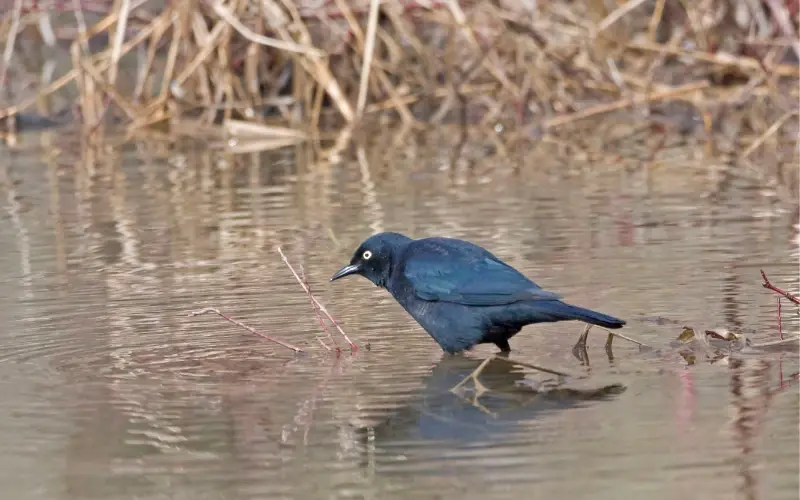
The rusty blackbird (Euphagus carolinus) is a medium-sized New World blackbird, closely related to grackles (“rusty grackle” is an older name for the species). It is a bird that prefers wet forested areas, breeding in the boreal forest and muskeg across northern Canada, and migrating southeast to the United States during winter.
In parts of the grain belt, these birds migrate to the eastern and southeastern United States, sometimes straying into Mexico. Additional excursions have been reported in Greenland and Russian Siberia.
Adults have a pointed bill and pale yellow eyes. They have black plumage with pale green and purple highlights. The woman is gray. “Rusty” refers to winter gray. They resemble the Brewer’s Blackbird, a western member of the same genus. However, the brewer’s bill is longer and the head of the male is bright green.
Standard measurements
Length 8.5–9.8 inches (220–250 mm)
Weight 60 grams (2.1 oz)
Wingspan 14 inches (360 mm)
Wingspan 110.5–117.4 mm (4.35–4.62 in)
Tail 85–94.5 mm (3.35–3.72 in).
Cullman 19–21.9 mm (0.75–0.86 in)
Tarsus 29.5–33 mm (1.16–1.30 in).
6. Brown-headed Cowbird
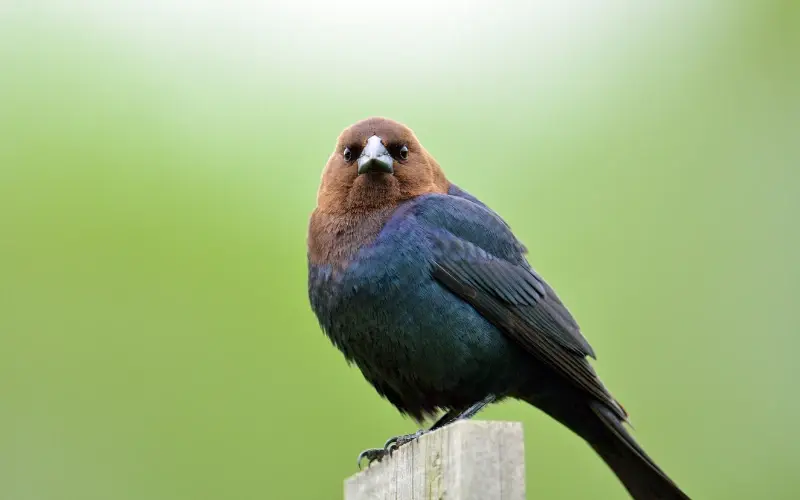
The brown-headed cowbird (Molothrus ator) is a small, obligate brood-parasitoid ichthyoid native to temperate and subtropical North America. It is a permanent resident in the southern parts of its range. Northern birds migrate to the southern United States and Mexico in the winter, returning to their summer habitat around March or April.
The brown-headed cowbird resembles an icterid in general appearance but is distinguished by its finch-like head and bill and smaller size. Adult males are black with a brown head. The adult female is slightly smaller and has a lighter throat and dull gray with excellent lines on the underparts. They have a total length of 16–22 cm (6.3–8.7 in) and an average wingspan of 36 cm (14 in). Body weight for females can range from 30–60 g (1.1–2.1 oz). . 38.8 g (1.37 oz) on average compared to 49 g (1.7 oz) for men.
Read: Birds in USA
7. Boat-tailed Grackle
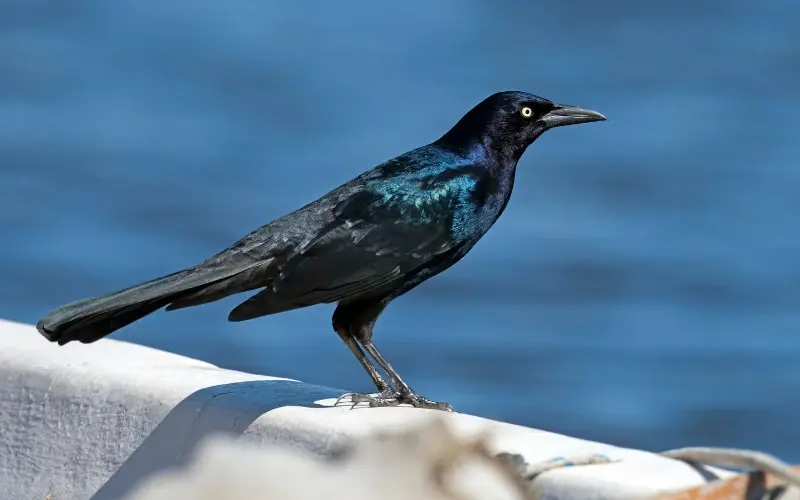
The boat-tailed grackle (Quiscalus major) is a passerine bird of the Icteridae family that is a permanent resident of the beaches of the southeastern United States.
The male boat-tailed grackle is 37–43 cm (15–17 in) long and weighs 165–250 g (5.8–8.8 oz). Adult males are completely black and have a long dark bill, pale yellow or brown iris, and a long nail-shaped tail. Adult females are much smaller at 26–33 cm (10–13 in) long and weigh 90–115 g (3.2–4.1 oz). They are also distinguished by their short tails and grayish-brown coloration, which is deep. Brown covers the body except for the wings and tail. Adult birds have a wingspan of 39–50 cm (15–20 in). In standard measurements, this species is 13–20 cm (5.1–7.9 in) with the arm bone, 11–20 cm (4.3–7.9 in) in tail length, 2–4.2 cm (0.79 in) with the culm. ) Is. ) measures -1.65 inches). and 3.6–5.8 cm (1.4–2.3 in) with tarsus. On average, the boat-tailed grackle weighs about 10% more than the closely related great-tailed grackle, although the male great-tailed grackle has an even longer tail.
8. Great-tailed Grackle
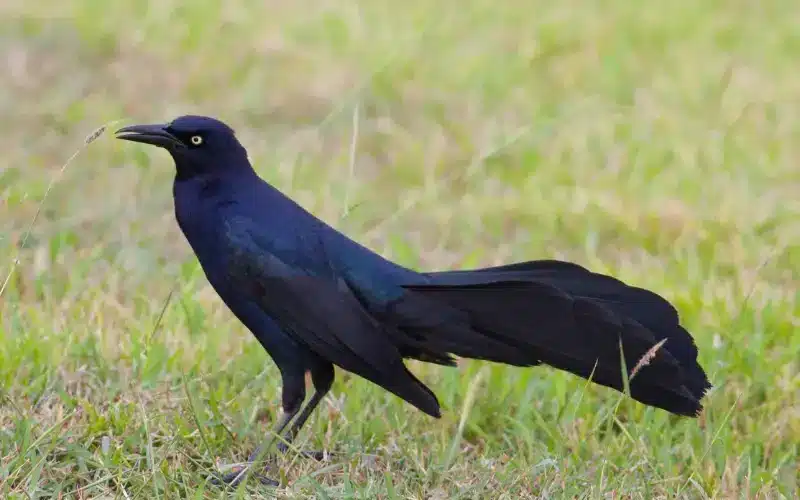
The great-tailed grackle or Mexican grackle (Quiscalus mexicanus) is a medium-sized, highly social passerine bird native to North and South America. A member of the family Icteridae, it is one of 10 extant species of grackle and is closely related to the boat-tailed grackle and the extinct thin-blooded grackle. In the southern and southwestern United States.
Great-tailed grackles are medium-sized birds (larger than a starling and smaller than a crow; 38–46 cm (15–18 in)) weighing 203–265 g (7.2–9.3 oz) and females 115–142 g (4.1 ) ) -) is 5.0 oz.) and both sexes have longer tails. While adults of both sexes have dark yellow eyes, juveniles of both sexes have brown eyes and brown as in females (except for breast streaks, especially in adult males), with a wedge-shaped tail. which they can straighten and fold vertically.
9. Common Grackle Birds in USA
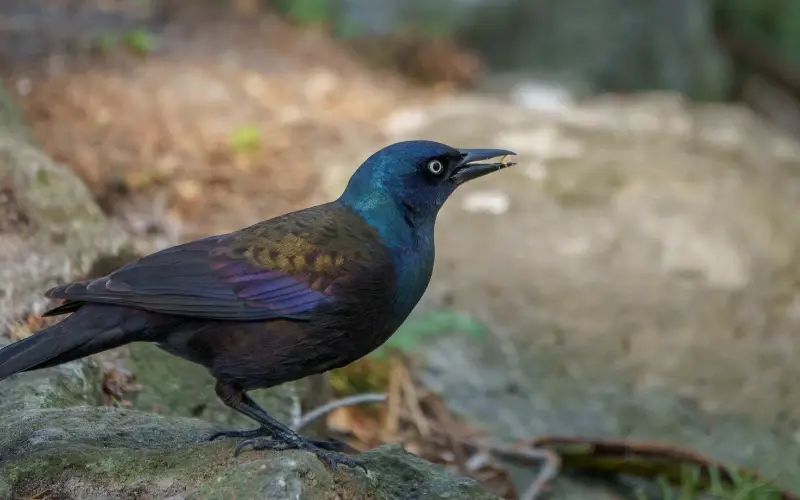
The common grackle (Quiscalus quiscula) is a species of large icterid bird found in large numbers throughout most of North America. First described by Carl Linnaeus in 1758, the common grackle has three subtypes.
Adult common grackles are 28–34 cm (11–13 in) long, have a wingspan of 36–46 cm (14–18 in), and weigh 74–142 g (2.6–5.0 oz). Common grackles are less sexually active than larger grackle species, but differences between the sexes can still be noticeable. Males, averaging 122 g (4.3 oz), are larger than females, averaging 94 g (3.3 oz). Adults have a long, dark bill, pale yellow eyes, and a long tail. Their wingtips appear black with purple, green, or blue, and the body plumage has a mostly bronze sheen. Older women, in addition to being younger, are generally less anxious. Their tails are notably short, and unlike the male, are gray in flight (not showing the longitudinal crest) and gray without purple or blue tinge. Juveniles are brown with dark brown eyes.
10. European Starling
The common starling is 19–23 cm (7.5–9.1 in) long, with a wingspan of 31–44 cm (12–17 in), and weighs 58–101 g (2.0–3.6 oz). In standard measurements, the wing is 11.8 to 13.8 cm (4.6 to 5.4 in), the tail 5.8 to 6.8 cm (2.3 to 2.7 in), the culm 2.5 to 3.2 cm (0.98 to 1.26 in), and the tarsus. 2.7 to 3.2 cm (1.1 to 1.3 in).
Although European Starlings are native to Europe, they can be found nearly throughout North America. They are found throughout the continental United States and most of Canada. They can be found in rural countryside and farms, but they can also be found in towns, suburbs, and even cities.
11. Yellow-headed Blackbird
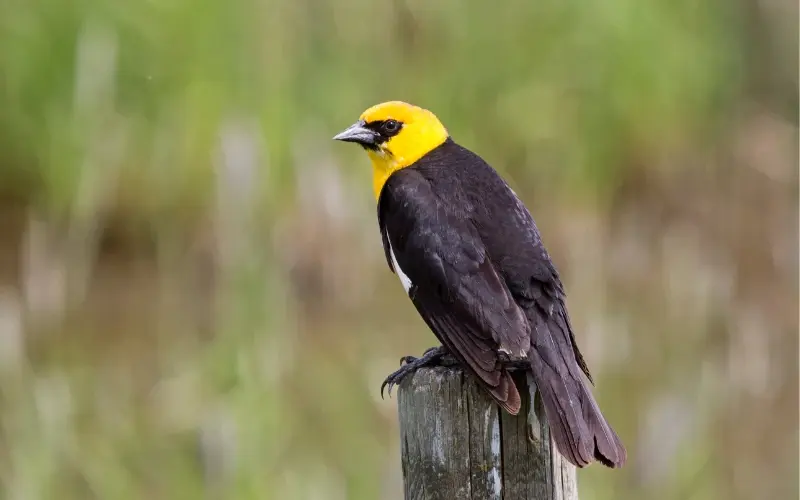
The Yellow-headed Blackbird (Xanthocephalus xanthocephalus) is a medium-sized blackbird with a yellow head.
Length: 8.3-10.2 inches (21-26 cm)
Weight: 1.6-3.5 oz (44-100 grams)
Wingspan: 16.5-17.3 inches (42-44 cm)
Yellow-headed blackbirds are considered large, relatively large blackbirds with yellow heads. Their name is derived from the Greek word for yellow, xanthos, and the word cephalus for head. Adults have a pointed bill. The head and breast of the adult male are mainly yellow. They have a white spot on their wings that is sometimes only visible in flight. The throat and breasts of the adult female are mainly brown with a yellow tinge.
These birds migrate to the southwestern United States and Mexico in the winter. They often migrate in large flocks with other bird species.
Read: Most Popular Birds in USA
12. Bronzed Cowbird
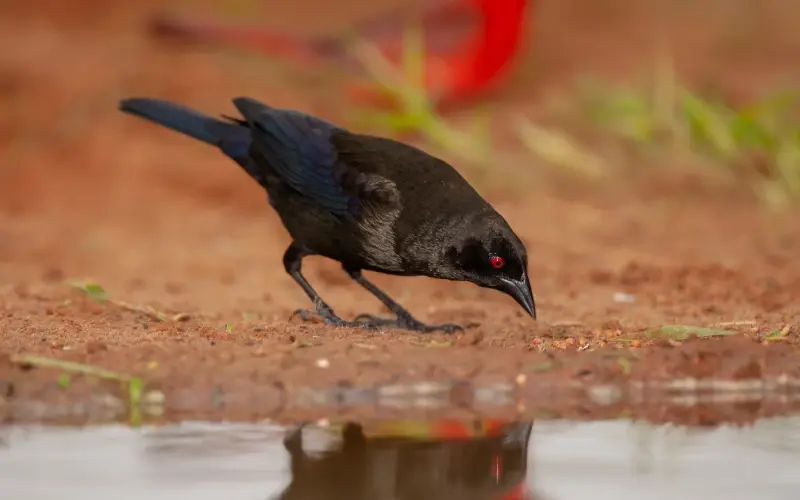
The bronzed cowbird (Molothrus aeneus), once called the red-eyed cowbird, is a small icterid.
8 1/2″ (22 cm). Heavier than the brown-headed cowbird, longer bill, shorter tail, and red eyes (hard to see). Neck ruff gives the appearance of stooped shoulders. Females are light black (Texas). or Gray-Brown (Arizona).
13. Shiny Cowbird
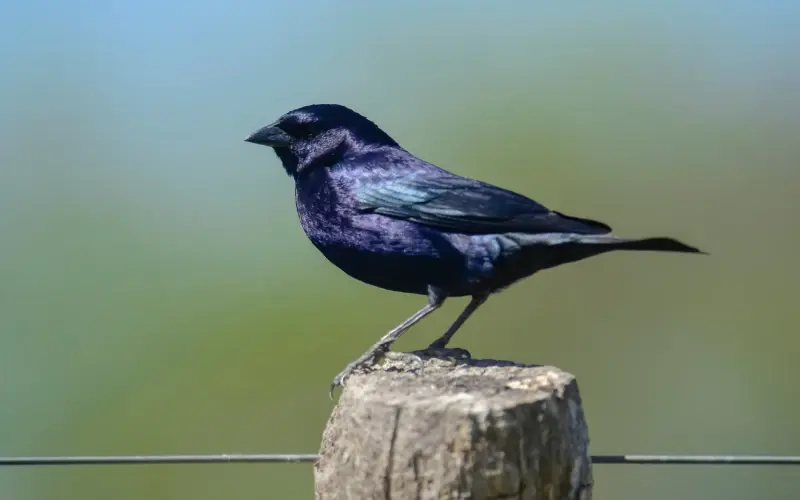
The glossy cowbird (Molothrus bonarensis) is a passerine bird in the New World family Icteridae. It grows in most parts of South America except in dense forests and high-altitude areas such as mountains.
The body shape of the shiny cowbird adult depends on the subspecies. Size ranges from 31-40 grams in mass and 18 cm in length (M. b. minimus) to 55-65 grams in mass and 22 cm in length (M. b. cabanisii).
Read: Birds in USA
14. Orchard Oriole (males are mostly black)
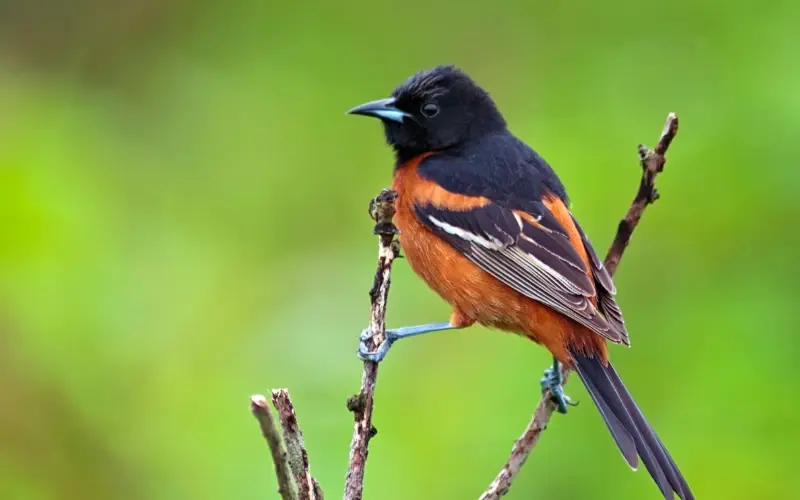
Smaller and thinner than the Baltimore oriole, garden orioles are typically about 6 to 7 inches (15 to 18 cm) tall with a wingspan of 10 inches (25 cm) and weigh about 1 ounce (28 grams). ) happens. ) happens.
The Orchard Oriole breeds from southern Canada south to eastern/central America and central Mexico. Its winter range extends from central Mexico to Colombia and Venezuela. It is indifferent to human proximity, and nests readily in parks, suburbs, and agricultural areas.
15. Baltimore Oriole
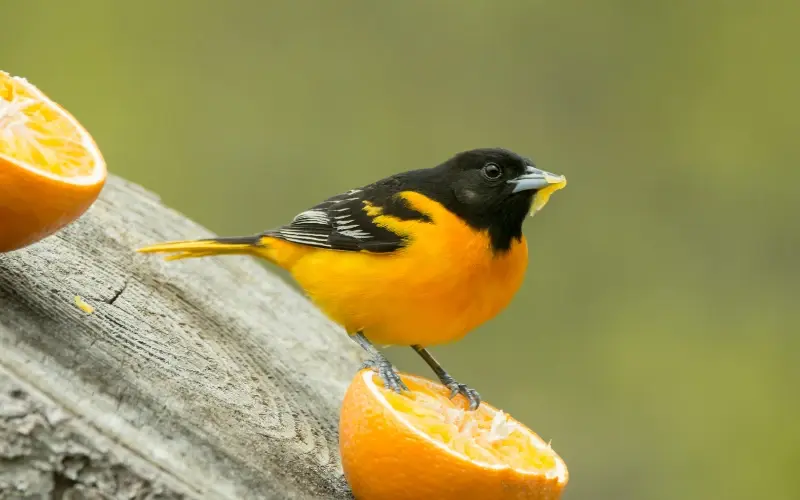
The Baltimore oriole (Actus galbula) is a small blackbird common as a migratory bird in eastern North America. It got its name from its resemblance to the men’s colors on Lord Baltimore’s coat of arms in the 17th century.
This medium-sized passerine is 17–22 cm (6.7–8.7 in) long and has a wingspan of 23–32 cm (9.1–12.6 in). Their structure is typical of icterids, as they have a strong body, long tail, fairly long legs, and a thick, pointed bill. Body weight ranges from 22.3 to 42 g (0.79 to 1.48 oz) with an average of 33.8 g (1.19 oz). The male oriole is slightly larger than the female, although the dimorphism is small in size by icterid standards. Adults always have white bars on their wings.
It winters in the Neotropics as far north as Mexico and sometimes on the southern coast of the United States, but mainly in Central America and northern South America. Some areas of the southern United States can sustain orioles all winter long if they have feeders that like them.
These are just a few examples, and there are more species and subspecies of blackbirds found across different regions of the USA.
Read: 8+ Beautiful White Birds in USA
16۔ Fish Crow
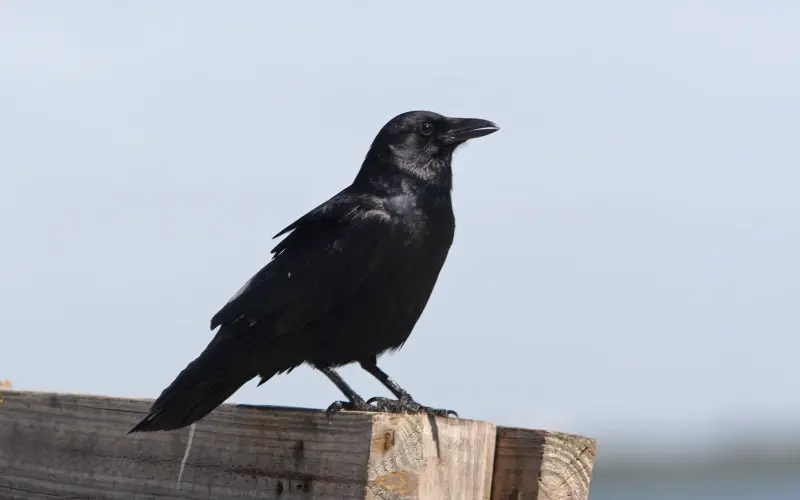
There are two types of crows in most of the eastern United States. Looking almost identical to the ubiquitous American crow, fish crows are difficult to identify unless you learn their nasal call. Look for them around bodies of water, usually in flocks and sometimes with American crows. They are superior journos, eating whatever they can find. Fish crows have expanded their range further inland and north along major river systems in recent decades.
These are just a few examples of the beautiful black birds in USA. Each species has its unique characteristics and can be found in different habitats across the country.



